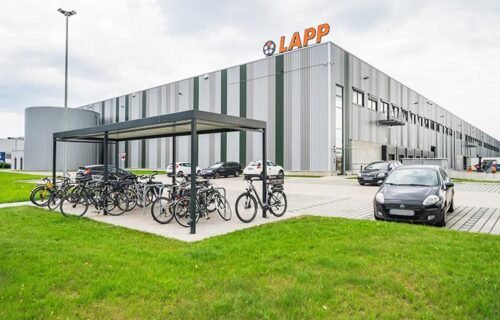LIP Invest, leading provider of special real estate funds in the asset class of logistics real estate in Germany, together with the tenant LAPP and project developer bauwo Grundstücksgesellschaft, held a ceremony to inaugurate the logistics centre in Hanover, Max-Müller-Straße, which was built in 2020. LIP’s managing directors Bodo Hollung and Sebastian Betz welcomed LAPP board member Georg Stawowy and Olympic decathlete Frank Busemann, amongst others.
LIP Invest had acquired the 42,000 square metre brownfield development after completion in an off-market transaction for one of its logistics funds. “In this purchase, the excellent location and the energetic building quality were decisive factors. We are delighted that the Hanover logistics centre has now been officially opened with such great approval,” says Hollung, partner and managing director of LIP Invest.
Accompanied by a spectacular opening ceremony including a light show and various expert presentations, the around 400 guests were able to convince themselves of the favourable location and sustainability of the new logistics location during the inauguration ceremony. Lower Saxony’s Minister President Stephan Weil underlined the high functionality of the modern logistics centre in his video message and Mayor Thomas Klapproth promoted Hannover as a logistics location. As a special keynote speaker, Frank Busemann, former Olympic decathlete, described how sporting activities can be transferred to everyday situations and thus contribute to personal and economic success.
For the Stuttgart-based family-owned company LAPP, the logistics property in Hanover is one of the most sustainable locations worldwide and the logistics hub for distribution in northern Germany, the Benelux countries, Scandinavia and the UK. Up to 60,000 cable drums can be stored on the approximately 27,000 square metres of paved outdoor space. A quarter of the outdoor area was left unsealed and laid out as a flower meadow.
In its operations, the cable manufacturer pays attention to an efficient use of resources: for example, gas consumption was reduced by 50 percent through a new packaging system; the forklift fleet is operated electronically. Old cable drums are recycled by using a special wood press, while cardboard waste is reused as filling material.
